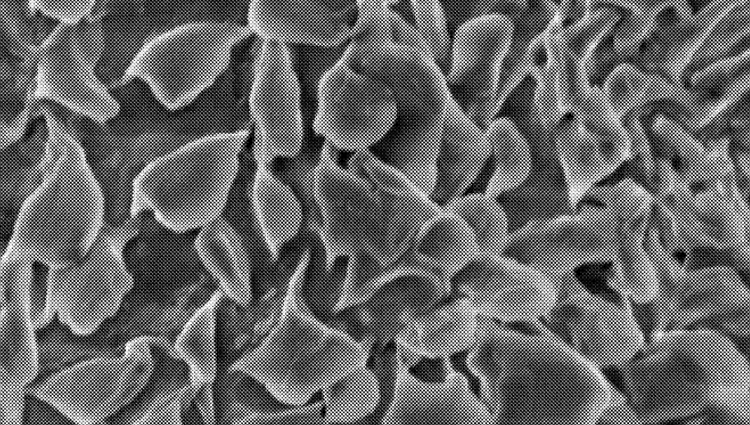APS Meeting: A Tale of Two Graphene Presentations

One of the hottest topics in physics over the last few years has been the wonder material graphene, an atom-layer-thick form of carbon that was the subject of the 2010 Nobel Prize in Physics. Today, the University of Manchester's Andre Geim, one of the Nobel Prize recipients for his groundbreaking work on the material in the last decade, gave two markedly different presentations, one to an audience of colleagues in the morning and another to an audience of journalists in the afternoon.
Graphene has an ever-increasing array of remarkable properties.
Electrons zip through the material as if they have no mass, making them potentially useful for fast electronics devices. Made of carbon, which tends to form strong chemical bonds, it is a mechanically resilient, yet lightweight material: it's stretchable like rubber, but has 200 times the breaking strength of steel. For a single-atom material, it can be remarkably opaque, but applying a voltage to it can make it transparent, rendering it a potentially useful for optical telecommunications switching devices.In the afternoon, Geim summarized the last several months' worth of announcements from his lab, which included the discovery that graphene is "absolutely impermeable" to materials with the exception of water, which passes through it extremely well, making it a potential purification filter. He discussed a new "vertical tunneling transistor" that could be the basis of high-performance electronic circuits. Never before have graphene-based integrated circuits looked so promising, he told the audience.
All of this seemed profound but hard to understand, save for those who are also actively competing to make discoveries in graphene. But this encapsulates much of the APS March Meeting for me: the most fundamental and deepest new discoveries in materials may seem incredibly esoteric to the rest of us, but can sometimes lead, in the coming years and decades, to powerful capabilities in future electronic devices that we have never seen before.

